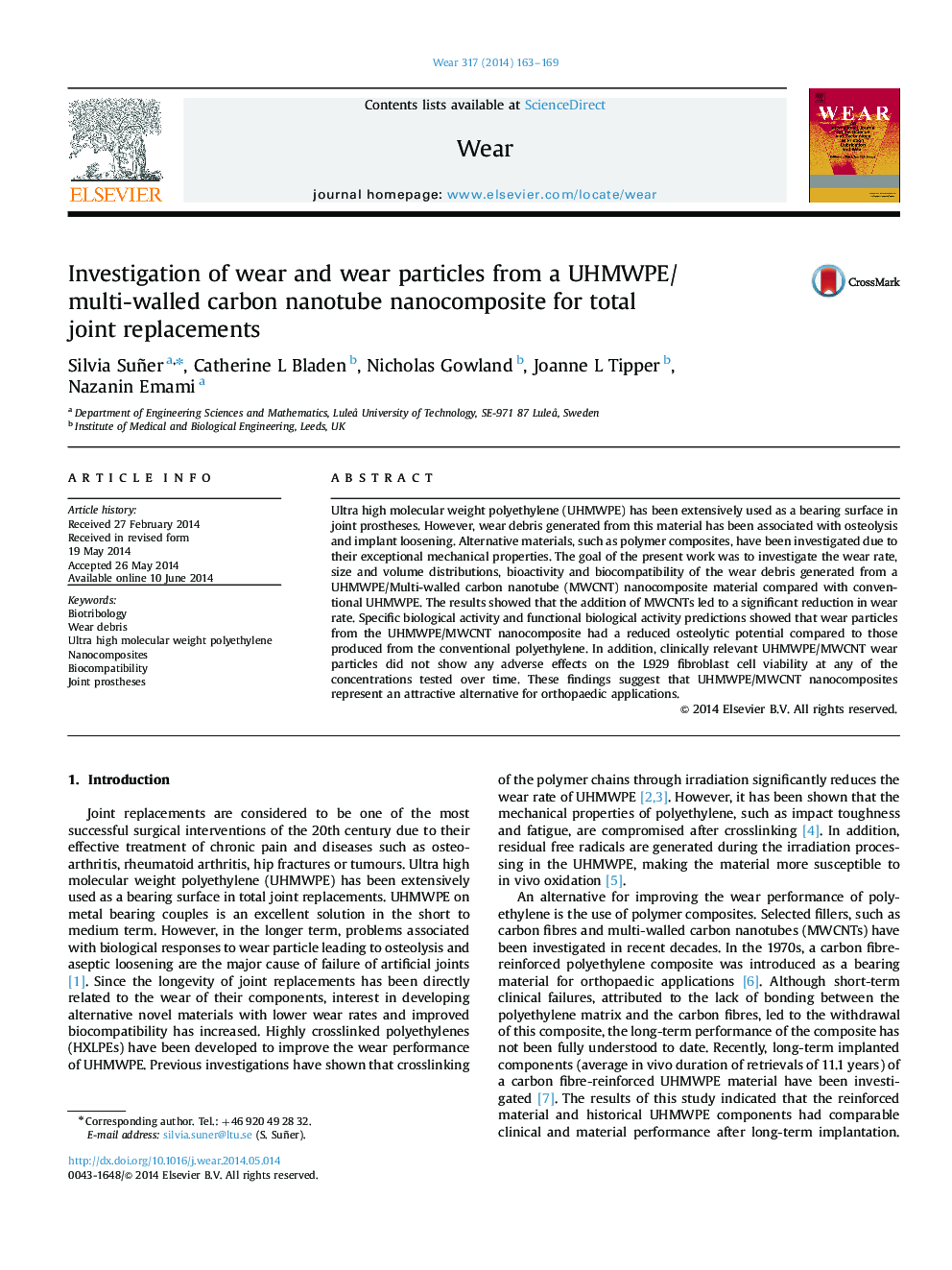| Article ID | Journal | Published Year | Pages | File Type |
|---|---|---|---|---|
| 617282 | Wear | 2014 | 7 Pages |
•Clinically relevant wear particles from a novel UHMWPE/MWCNT nanocomposite have been isolated and characterised.•The addition of MWCNTs to conventional UHMWPE led to a significant reduction in wear rate.•Clinically relevant UHMWPE/MWCNT wear particles did not have any adverse effects on the viability of L929 fibroblasts cells.
Ultra high molecular weight polyethylene (UHMWPE) has been extensively used as a bearing surface in joint prostheses. However, wear debris generated from this material has been associated with osteolysis and implant loosening. Alternative materials, such as polymer composites, have been investigated due to their exceptional mechanical properties. The goal of the present work was to investigate the wear rate, size and volume distributions, bioactivity and biocompatibility of the wear debris generated from a UHMWPE/Multi-walled carbon nanotube (MWCNT) nanocomposite material compared with conventional UHMWPE. The results showed that the addition of MWCNTs led to a significant reduction in wear rate. Specific biological activity and functional biological activity predictions showed that wear particles from the UHMWPE/MWCNT nanocomposite had a reduced osteolytic potential compared to those produced from the conventional polyethylene. In addition, clinically relevant UHMWPE/MWCNT wear particles did not show any adverse effects on the L929 fibroblast cell viability at any of the concentrations tested over time. These findings suggest that UHMWPE/MWCNT nanocomposites represent an attractive alternative for orthopaedic applications.
